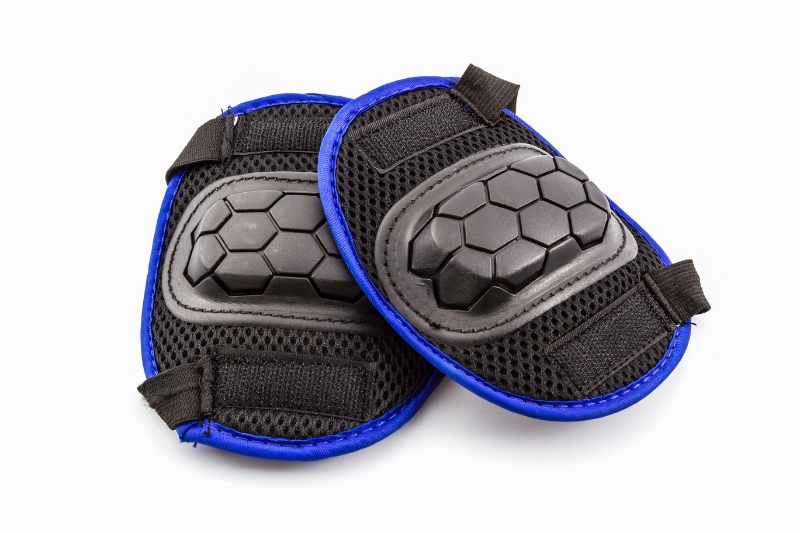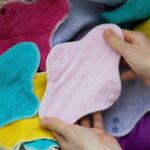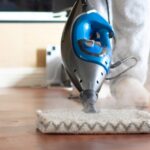Knee pads are a form of protective equipment that helps reduce the stress put on your knees during certain activities. They are often used in sports, such as volleyball and skating, but are also useful when doing manual labour that requires you to be on your knees.
Like with clothes, wearing knee pads for an extended period will cause them to accumulate dirt and sweat. This makes them unhygienic to wear and can result in unwanted odours.
Fortunately, it is very easy to clean your knee pads so that they remain fresh and functional for many years to come.
Read on to learn how to wash knee pads effectively, how often you need to wash them, and general maintenance tips to keep them in top condition.
How to Wash Knee Pads in the Washing Machine
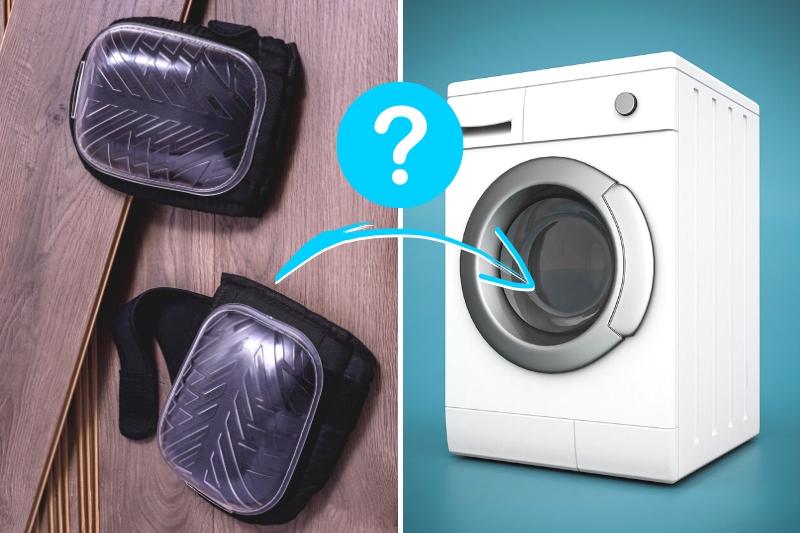
The easiest way to wash your knee pads is by putting them in the washing machine. Although this is safe for most pads, some may become damaged during the wash cycle.
To be safe, we highly recommend you check the care label and make sure the manufacturer recommends machine washing before following the below instructions.
Step 1: Place the knee pads in a laundry bag
The first step is to place your knee pads in a mesh laundry bag.
Placing your knee pads in a laundry bag before washing helps to protect them during the cycle. It will also stop the pads from becoming tangled with the rest of your laundry or snagged on the drum.
If you don’t have a laundry bag to hand, try one of these brilliant alternatives.
To prevent the pads from tangling together within the bag, you must also ensure that any fastenings (e.g., Velcro) are fully secured before enclosing them inside.
Step 2: Fill the washing machine halfway
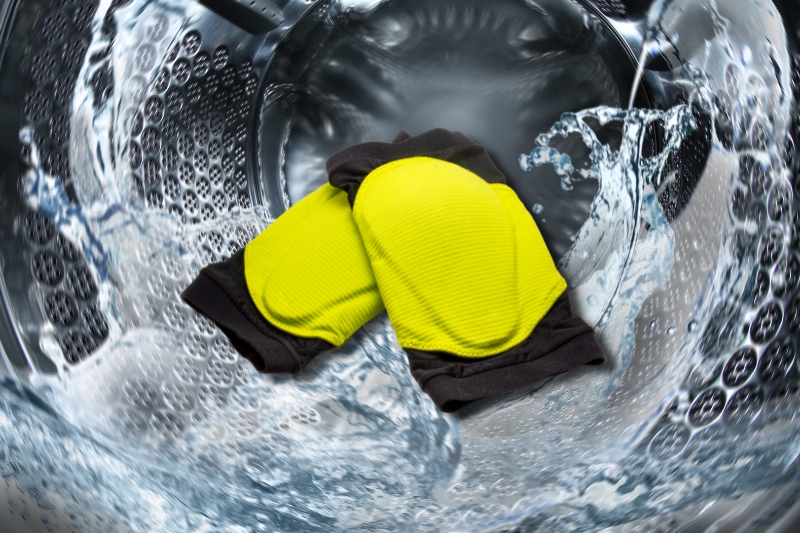
Avoid loading your knee pads into the machine drum on their own when washing them.
Although this may seem like a good idea, the high speeds reached during the wash cycle will cause the pads to hit the sides of the drum. This can cause damage to both the pads and your washing machine.
Instead, it is a good idea to fill the machine drum halfway and place your knee pads into the machine with these other items.
If you use the pads for sport, an easy way to do this is by loading in the rest of your uniform or workout clothes at the same time.
You can also add some of your regular laundry, but avoid delicate items as they could become damaged.
Step 3: Add mild laundry detergent
Once you have loaded the drum of your washing machine, add some mild laundry detergent to the dispenser drawer.
Ensure the detergent doesn’t contain any bleaching agents, and always use the amount advised on the product label for a half load of washing.
If your knee pads have a noticeable odour, you can also add a couple of tablespoons of white vinegar to the dispenser.
This common household ingredient will help to neutralise any odours so that your pads come out of the wash as good as new.
Step 4: Select your wash cycle
There are usually plenty of washing programmes to choose from on a washing machine, but a gentle cycle is the best option when washing knee pads.
This is because these cycles typically mimic handwashing and are less likely to cause any damage to your pads or the machine.
Depending on your washing machine, this cycle may be labelled as “gentle”, “delicate”, or “handwash.”
Simply choose the cycle setting recommended for more delicate items in the appliance’s instruction manual.
If no gentle pre-programmed wash cycle is available, lower the temperature and spin speed of a regular cycle.
Step 5: Remove the knee pads & leave to dry
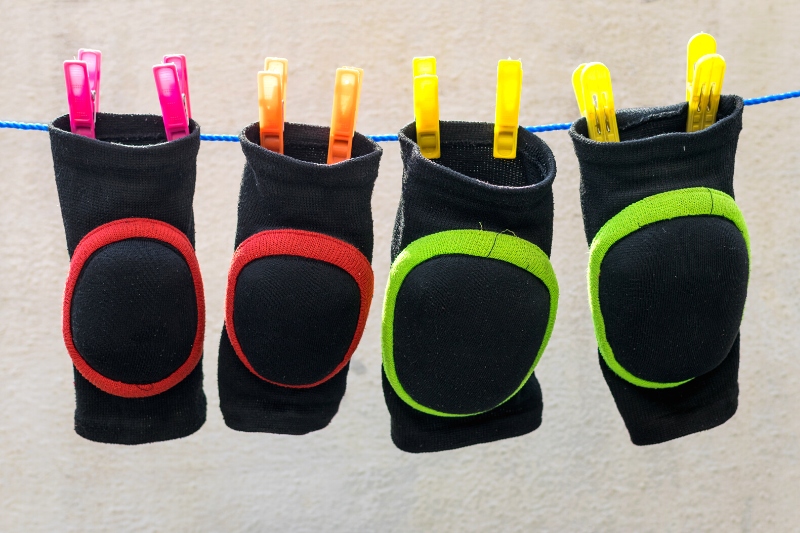
Once the cycle has finished, take your knee pads out of the machine and remove them from the laundry bag.
You can then either hang the pads up to dry or lay them out on a flat surface. If you decide to do the latter, make sure you regularly turn the pads over so that both sides can dry.
In general, this drying process will take between 6 and 12 hours. If you need to speed up this process, your best bet is to leave the pads in direct sunlight. This will remove the moisture more quickly and kill any remaining bacteria.
Whatever you do, don’t place the knee pads in your tumble dryer or near another heat source, as this will cause them to become misshapen.
How to Wash Knee Pads by Hand
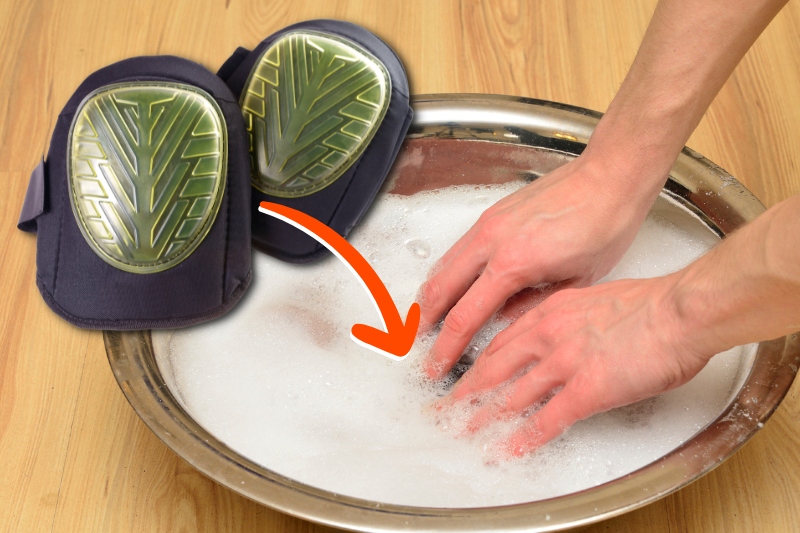
Any knee pads that cannot be safely put in the washing machine can be hand washed.
This process isn’t quite as straightforward as machine washing, but it will remove the vast majority of dirt and bacteria from your pads so that they’re ready to be worn again.
Step 1: Fill a tub with hot water
Start by filling your sink, bathtub, or a large bucket with enough water to submerge the knee pads fully.
You want the water to be hot, as the high temperature will help remove the dirt and bacteria in the fabric without the need for lots of agitation.
However, make sure the water temperature isn’t too hot that it’s painful on your hands.
Step 2: Add the detergent
Add 60 ml of mild laundry detergent to the water and use your hand to swirl it around until evenly distributed.
If desired, you can also add a few tablespoons of white vinegar at the same time to help combat unwanted odours.
Step 3: Submerge the knee pads
Fully submerge the knee pads in the hot soapy water. You will need to swirl them around for roughly 5 minutes to ensure the material is fully saturated.
This helps to mimic the movement of a washing machine. During this time, dirt may be released into the water. This is a good thing, as it means that the pads are becoming clean.
If your knee pads still smell after the 5 minutes are up, add a little more white vinegar to the water and repeat the process until you’re satisfied with the results.
Step 4: Leave the knee pads to soak
Once you’re happy that any odours have been removed, leave the pads to soak in the water for at least 30 minutes.
This will allow the cleaning agents to properly soak into the middle of the pad and kill any bacteria lurking there.
If your water became filthy during step 3, empty and refill the tub before completing this step. Remember to add more detergent and vinegar to ensure the pads are thoroughly cleaned.
Step 5: Rinse off the residue
Drain the tub of the dirty water and rinse each pad under a hot tap until the water starts running clear.
If you have been rinsing the pads for a few minutes and this still hasn’t happened, you will have to soak them for another 30 minutes to ensure they are fully clean.
This second soak typically won’t require white vinegar, but you can add some to the water if any odours remain.
Step 6: Remove excess water & leave to dry
Finally, blot the knee pads with a clean towel to remove some of the excess water. An effective way of doing this is by folding the pads into the towel and pressing down on them a few times. Once damp, either hang or lay out the pads and leave them to dry.
Once again, this drying process will take between 6 and 12 hours. You can lay the pads in the sun to speed up the process, but avoid contact with other heat sources, such as radiators, heated airers, or tumble dryers.
How Often Should You Wash Your Knee Pads?
Ideally, you need to wash a pair of knee pads once every 2-3 wears. This typically equates to every 1 or 2 weeks but may increase to every other day if the pads are used frequently.
The reason for such regular cleaning is due to the sweat, dead skin cells, and other debris transferred to the fabric every time you wear the pads. This provides a breeding ground for bacteria and will soon start to smell unless washed quickly.

How Do I Stop My Knee Pads From Smelling?
Although keeping up a regular washing schedule is a great step towards keeping your knee pads in top condition, you can do several other things to help extend their lifespan and keep them hygienic. These include:
- Airing the pads after use: Airing out your knee pads after wearing them is a great way to eliminate odours and help them go longer between washes. When doing so, turn the pads inside out and place them in a well-ventilated area, preferably overnight.
- Rotating knee pads: If possible, we recommend purchasing a second pair of knee pads so that you can alternate between the two. This means you can allow any sweat that has built up on one pair to dry before wearing them again, helping to cut down on the unpleasant smell.
- Using a disinfectant: The antimicrobial agents found in disinfectant sprays and wipes will help prevent bacteria growth at a cellular level. They can be purchased at most pharmacies and applied to the pads after wear to help eliminate these microorganisms.

Hannah has a passion for cleaning. She worked her way around Australia by cleaning hostels in exchange for free accommodation and used her cleaning skills to bag a job as a chalet host for a luxury ski company in France.
